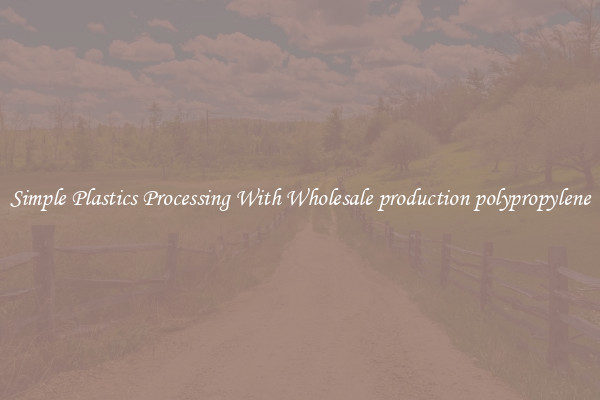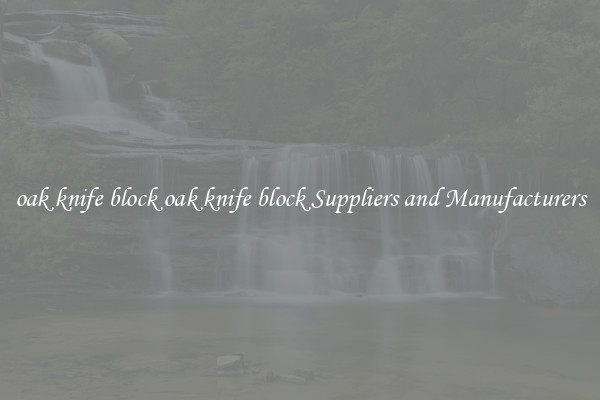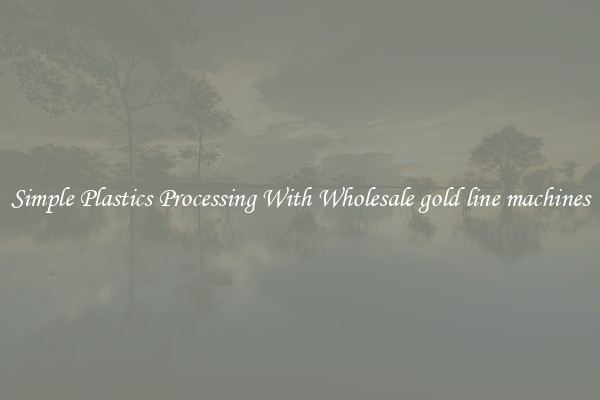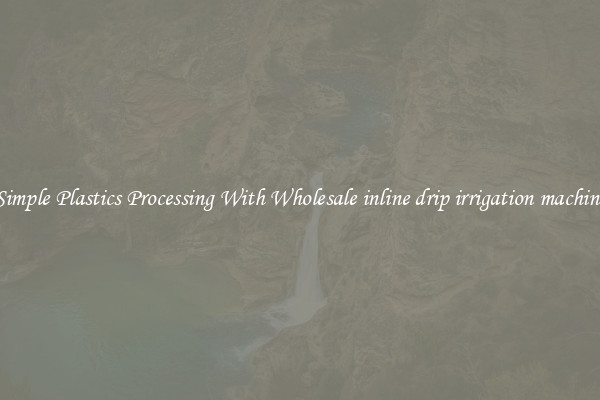Simple Plastics Processing With Wholesale production polypropylene
Simple Plastics Processing With Wholesale Production Polypropylene

Plastics are an integral part of our everyday lives. From packaging materials to household items, the versatility of plastics makes them indispensable. One of the most commonly used and versatile plastics is polypropylene. With its wide range of applications, polypropylene has become a favorite choice for both manufacturers and consumers.
Polypropylene offers various benefits, such as excellent chemical resistance, low density, and high impact strength. It can be easily processed through different manufacturing techniques, making it a cost-effective option for many industries.
Wholesale production of polypropylene enables manufacturers to meet the growing demand for plastic products efficiently. Here are some simple plastics processing techniques used in wholesale production of polypropylene:
1. Injection Molding: Injection molding is one of the most common methods used to produce plastic products. In this process, polypropylene pellets are heated to a molten state and injected into a mold. The mold is then cooled, solidifying the plastic into the desired shape. This technique allows for precise control over the size, shape, and thickness of the final product. Injection molding is widely used in the production of various items like automotive parts, containers, and consumer products.
2. Blow Molding: Blow molding is mainly used to create hollow plastic objects like bottles, tanks, and containers. In this process, a heated tube of polypropylene is placed inside a mold, and air is blown into the tube until it expands to the shape of the mold. After cooling, the plastic takes on the desired form. This method is efficient for large-scale production, providing cost-effective solutions for industries that require large quantities of plastic bottles or containers.
3. Extrusion: Extrusion is a continuous process used to manufacture products with a consistent cross-sectional shape, such as pipes, tubes, and profiles. In this technique, polypropylene pellets are fed into an extruder, where they are heated and melted. The molten plastic is then forced through a die, which shapes the material into the desired form. Extrusion is a versatile method that allows for customization of products in terms of color, size, and texture.
4. Thermoforming: Thermoforming is commonly used to produce trays, packaging materials, and disposable products. In this process, a sheet of heated polypropylene is placed over a mold and vacuum-formed to create the desired shape. The cooled plastic is then trimmed and ready for use. Thermoforming is a cost-effective technique for producing large quantities of lightweight plastic products.
Polypropylene has revolutionized the plastics industry with its ease of processing and versatility. Wholesale production of polypropylene allows manufacturers to take advantage of its benefits, producing high-quality plastic products in large quantities. Whether through injection molding, blow molding, extrusion, or thermoforming, the simplicity of these processing techniques ensures the mass production of polypropylene-based items.
In conclusion, the wholesale production of polypropylene has simplified the manufacturing process for plastic products. With its excellent properties and ease of processing, polypropylene has become a popular choice among industries. By utilizing various processing techniques such as injection molding, blow molding, extrusion, and thermoforming, manufacturers can meet the increasing demand for plastic products efficiently and cost-effectively.

View details

View details

View details

View details








